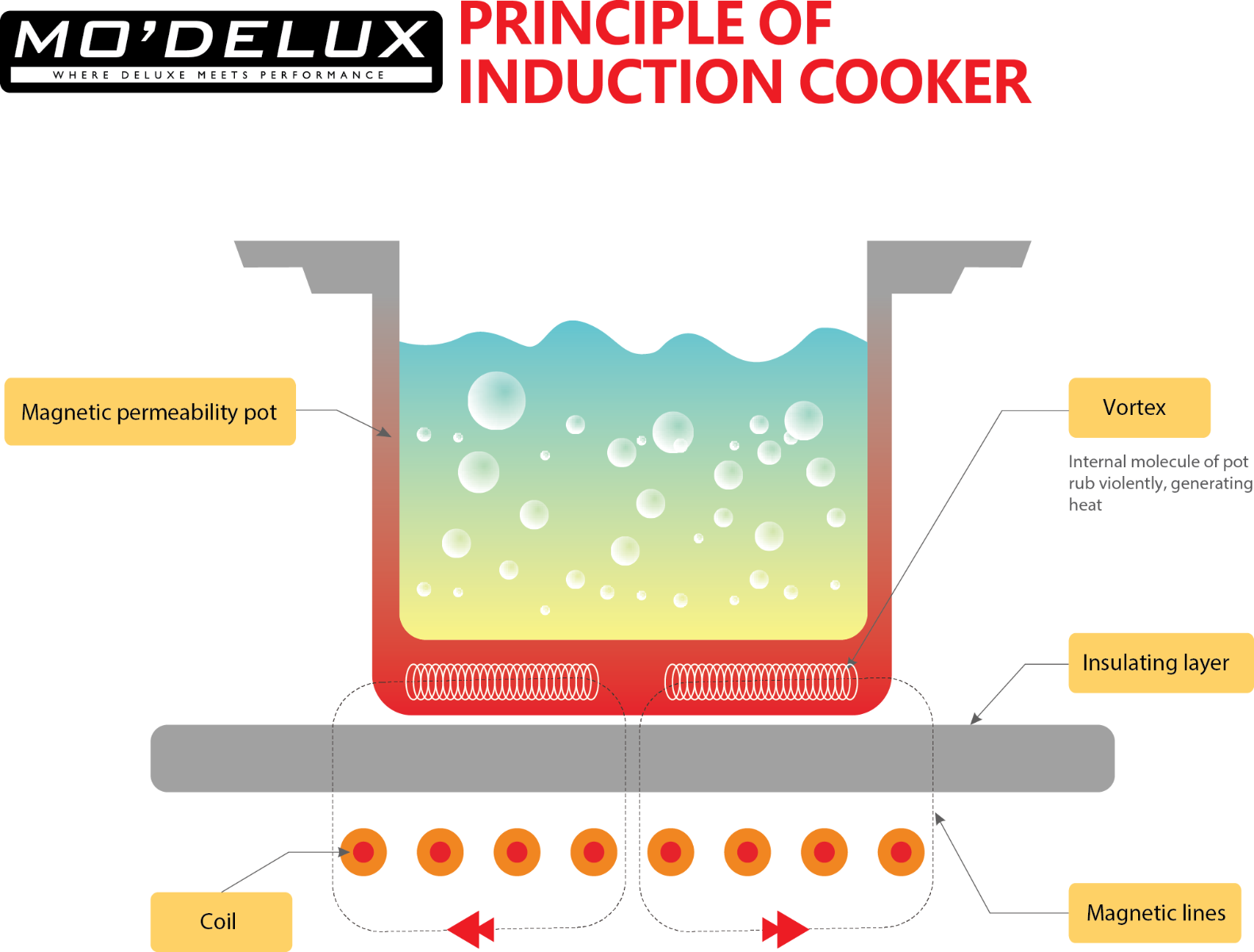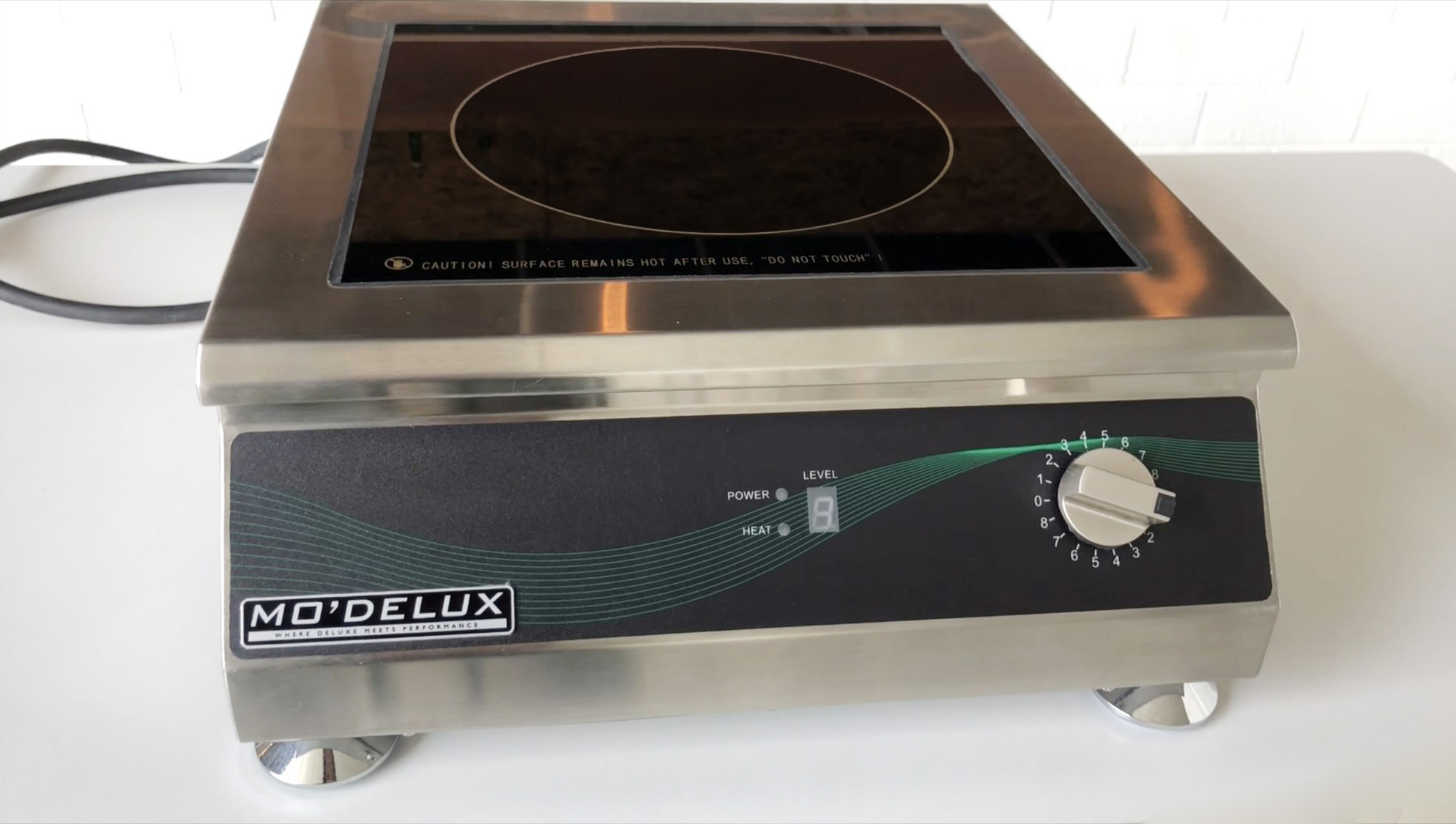Recently, induction cooking has become hugely popular in commercial kitchens. And if you've been to hotpot restaurants, then you know that induction cookers are very widely used in such establishments.
This induction cooker by MODELUX is made to withstand the rigors of commercial usage. some might think that all induction cookers are made the same, but truth is, they only look the same on the outside. Inside, it's a wholly different ballgame.
Unlike traditional gas-powered stoves, cooking with induction utlizes electromagnetic waves to heat up pots and pans. Beneath the ceramic surface of the cooktop, an alternating electric current is passed through a coil of copper wire. This induces an electrical current in the pot and produces an electromagnetic current. It's a vortex of energy contained within the pot where molecules rub violently together, also known as Eddy currents. This resistance is what results in resistive heating. So, the metal pan gets hot and heats up whatever food is inside it.

Induction cooking occurs when electromagnetic field comes into contact with a ferromagnetic material, Non-ferrous materials such as ceramic, glass, aluminium and copper would not work on induction cooktops. But it would be more precise to say that the base of the cookware only needs to have iron in it in order to work. For instance, most cookware that are labeled as induction-friendly would feature a visibly thicker layer of metal at the bottom.
To determine whether your cookware will work with induction cooktops, you can try sticking a magnet to your cookware. If it attracts, it will work and vice versa.
Now the question is, how do you choose an induction cooker?
First, is the ceramc thickness. Cooking with induction means that the bottom of the cookware is in closer proximity to the stove compared to other cooking methods. It has to be just the right thickness and at the same time, able to withstand the thermal and physical stresses typical of everyday kitchen activities.
Second, is the coil diameter. The bigger the diameter of the coil, the better it will be at generating sufficient heat to cook the food.
Third, is the surface area of the coil This will determine the size of the pots and pans that could be used on the induction cooker. The cooking area indicated on the creamic surface doesn't always correspond to the surface area beneath the ceramic, so sometimes the cooking zone might be bigger than it really is.



